15 Best Outdoor Dog Breeds For Your Next Adventure
Thinking about getting a dog that would stay outdoors much of the time? These outdoor dogs can and genuinely enjoy staying (and even living) outside! Here they are - plus how you can keep them healthy, happy & safe.
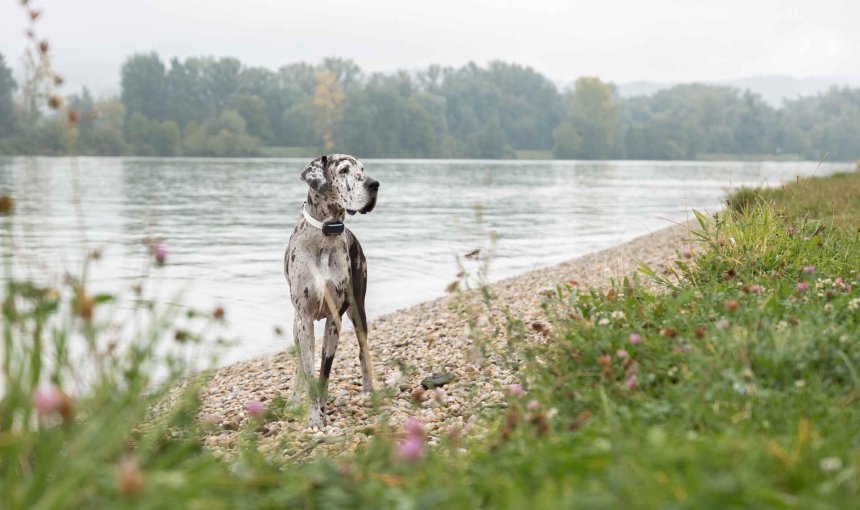
Whether you’ve got an active dog or a more chill one, the great outdoors is the perfect place for them to get the exercise, sunlight, excitement, and sensory stimulation they need to be happy and healthy. But have you ever wondered…can some dogs actually live – and enjoy living – outdoors safely? Let’s take a look at the best outdoor dog breeds, how to keep them happy and healthy – and how to prevent them from getting lost on their outdoor adventures.

Always know your buddy is healthy & safe
Read more- What are the best dog breeds that can live outside?
- 1. Alaskan Malamute
- 2. American Foxhound
- 3. Australian Cattle Dog
- 4. Bearded Collie
- 5. Australian Shepherd Dog
- 6. Belgian Sheepdog
- 7. Bernese Mountain Dog
- 8. German Shepherd Dog
- 9. Great Pyrenees
- 10. Irish Wolfhound
- 11. Greater Swiss Mountain Dog
- 12. Labrador Retriever
- 13. Norwegian Elkhound
- 14. Siberian Husky
- 15. Samoyed
- Enjoy an active lifestyle with your outdoor-loving adventure dog!
What are the best dog breeds that can live outside?
The 15 popular dog breeds listed here are the experts’ top choices for dogs that can spend extended periods outdoors due to their high energy and working-dog pedigrees. Do your homework and decide which breed is right for your lifestyle, members of your household, and your outdoor space.
If you’re looking for low-maintenance outdoor dog breeds, remember that all dogs, whether they spend their lives indoors or out, thrive with basic dog obedience training and lots of attention from you. That investment of training and attention will build a lifelong bond between you and your pup.
1. Alaskan Malamute
Weighing 75-85 pounds as adults, Alaskan Malamutes were bred to carry large loads by sled over snowy terrain. These tough, loyal dogs have thick fur, which keeps them warm in cold weather. Malamutes can be strong-willed, yet they are intelligent and hard-working.
⚠️ Malamutes do, however, have a strong prey drive. Aka, hunting instincts which might lead them to chase down smaller pets or woodland animals. Which is one of the top reasons why dogs run away.
2. American Foxhound
Ideal for rural areas with plenty of room for running, American Foxhounds were bred for speed. These extremely energetic dogs make great jogging companions due to their high stamina. Adults weigh 40-65 pounds. Experienced pet owners recommend training your American Foxhound while young for the best results.
⚠️ Much like Malamutes, all hounds have a keen hunting instinct that might lead them to chase down woodland animals. (Or fellow joggers!) American Foxhounds clock in running speeds of around 22.7 miles per hour (or around 36 kilometers per hour) – around the speed of a slow-moving car. So make sure to get your Foxhound microchipped at the very least, so that a helpful stranger can take them to a vet or shelter – and identify you as the rightful owner.
3. Australian Cattle Dog
A classic working dog, Australian Cattle Dogs are popular outdoor breeds. Their medium size – about 35-45 pounds – loyalty, and intelligence make them good choices for families. As long as you are able to establish yourself as the pack leader and keep your pup busy outdoors, you and your Australian Cattle Dog will thrive together.
4. Bearded Collie
Intelligent and agile, Bearded Collies were originally bred as herding dogs for livestock. At 35 to 60 pounds, these shaggy dogs require frequent grooming due to their long coat. Bearded Collies can be playful companions for your family.
5. Australian Shepherd Dog
Known as the cowboy’s top choice for herding, Australian Shepherd Dogs were bred as livestock guardians. Known as “Aussies,” these dogs excel in agility competitions and make great hiking or running partners. These 35- to 70-pound dogs need plenty of exercise to keep them happy. Here’s one pictured wearing a Tractive GPS tracker – Australian Shepherds are notorious for being the #1 runaway dog breed!
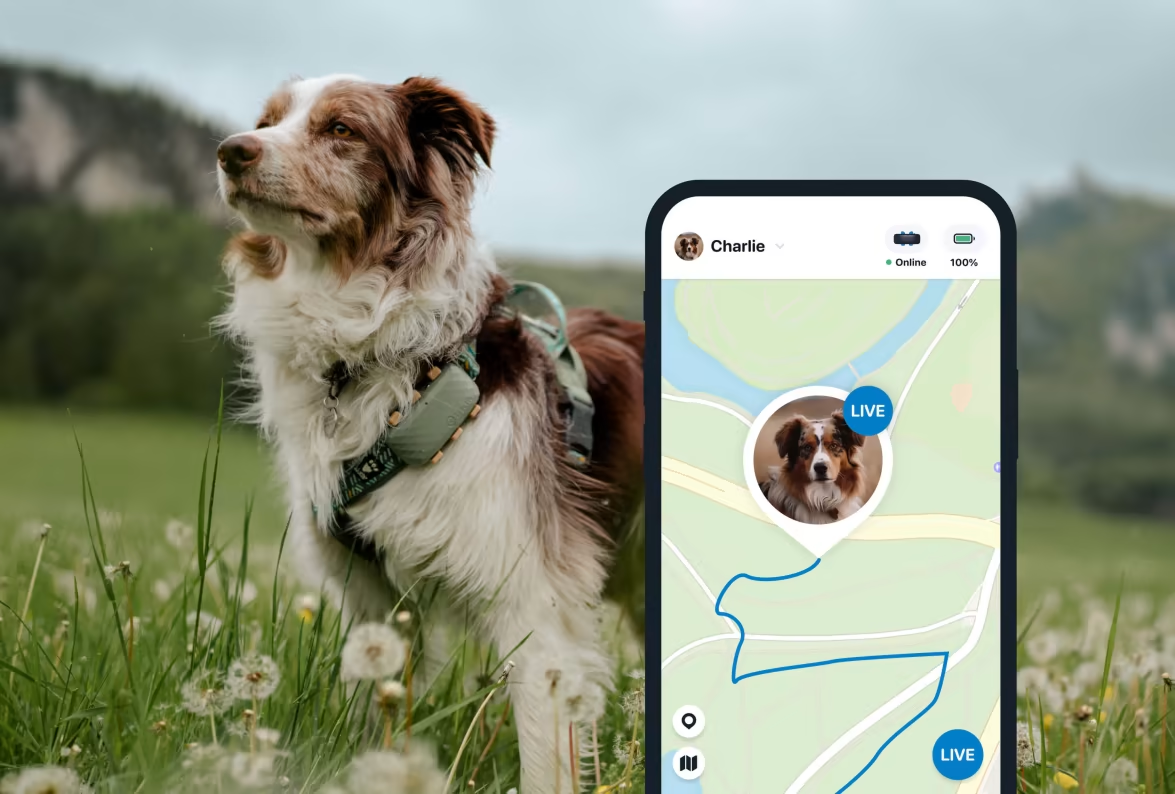
6. Belgian Sheepdog
Known as easy to train, Belgian Sheepdogs are agile and obedient. Their excellent tracking skills make them invaluable members of search and rescue teams. Belgian Sheepdogs are large, weighing 60-75 pounds, so they require a well-maintained fence for containment. Because they do well in warm and cold weather, Belgian Sheepdogs are regarded as one of the best outdoor dog breeds.
However, combined with their keen sense of smell, Belgian Sheepdogs have a strong prey drive. (Which means they’ll chase nearly anything that moves.) Don’t skip out on their obedience training – especially their recall.
7. Bernese Mountain Dog
Bred in Switzerland as watchdogs and herders, Bernese Mountain Dogs have a calmer temperament than many other herding dogs. Their large size of 70-115 pounds contrasts with their gentle personality, making them suitable for families with children. The thick coat protects these dogs in cold weather, but they shed all year long.
⚠️ Bernies, sadly, are vulnerable to separation anxiety.2 Which means they can get restless and antsy if you leave them alone even for short periods of time. Separation anxiety is also one of the prime reasons why dogs run away from home.
8. German Shepherd Dog
Loyal, intelligent, and courageous, German Shepherds are a popular breed that is used worldwide as police, service, and guard dogs. German Shepherds enjoy a moderate amount of activity and are even-tempered, making them suitable for families. These dogs weigh 75-95 pounds and are strong and agile, so they require exercise every day. German Shepherds are all-weather dogs, but their thick coat can pose a risk in extreme heat.
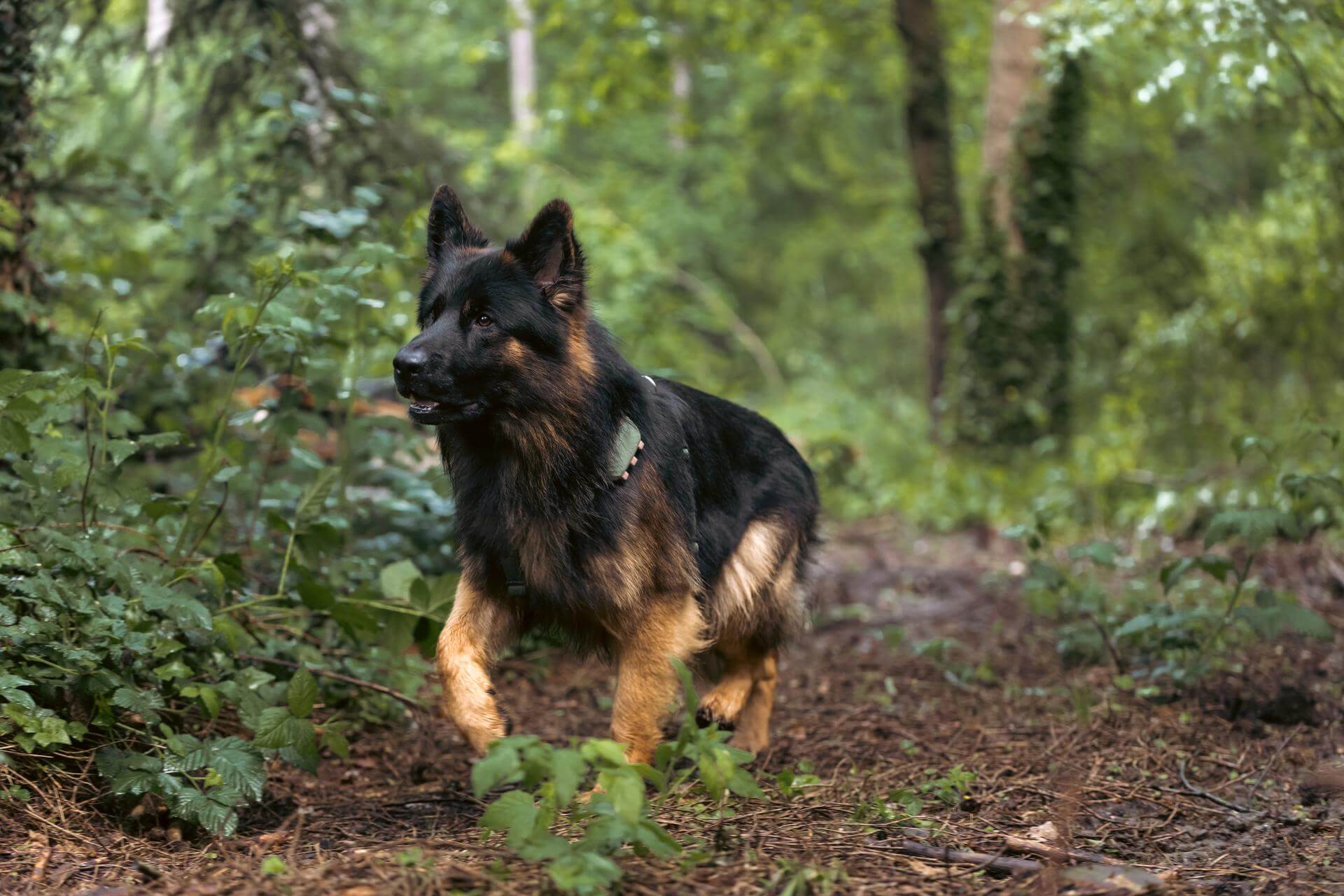
9. Great Pyrenees
Hardy mountain dogs, the Great Pyrenees was bred to guard and herd livestock in the Pyrenees Mountains of Europe. Their thick coats protect them from the cold. Weighing up to 130 pounds, these outdoor dogs are moderately active and highly intelligent.
At the same time, Great Pyrenees tend to be quite stubborn by temperament – which might make them difficult to train. But with time, patience, and consistency, you can improve your Pyrenees’ recall to keep them safe when off wandering the woods or wilderness together.
Read more:
10. Irish Wolfhound
Weighing up to 120 pounds and standing nearly three feet tall, Irish Wolfhounds are one of the largest dog breeds. Due to their size, Irish Wolfhounds need large outdoor spaces to run and play. Their coarse fur keeps them comfortable in a range of climates. Despite their somewhat intimidating size, Irish Wolfhounds are not aggressive and are a great fit for an active family.
⚠️ But much like Foxhounds, watch out for your Wolfhound’s prey drive. They were built to chase down and hunt wolves after all!
11. Greater Swiss Mountain Dog
Strong and powerful, Greater Swiss Mountain Dogs were bred in the Swiss Alps to pull carts and act as livestock guardians. Weighing 85-140 pounds, their short coat enables them to be outdoors in cool and warm weather. Greater Swiss Mountain dogs are less energetic than other herding dogs. But they do enjoy being included in household activities and getting daily exercise.
12. Labrador Retriever
Faithful, playful, and energetic, Labrador Retrievers were originally bred to help hunters and fishermen. Adults weigh 55 – 80 pounds, and Labradors come in a variety of coat colors from yellow to chocolate. These active adventure dogs need high amounts of mental and physical stimulation in the form of play, work, or human interaction. Else, they do tend to get bored easily – which can trigger a runaway attempt. (Especially if they’ve sniffed out a snow pile nearby or some sight, sound, or smell in nature.)
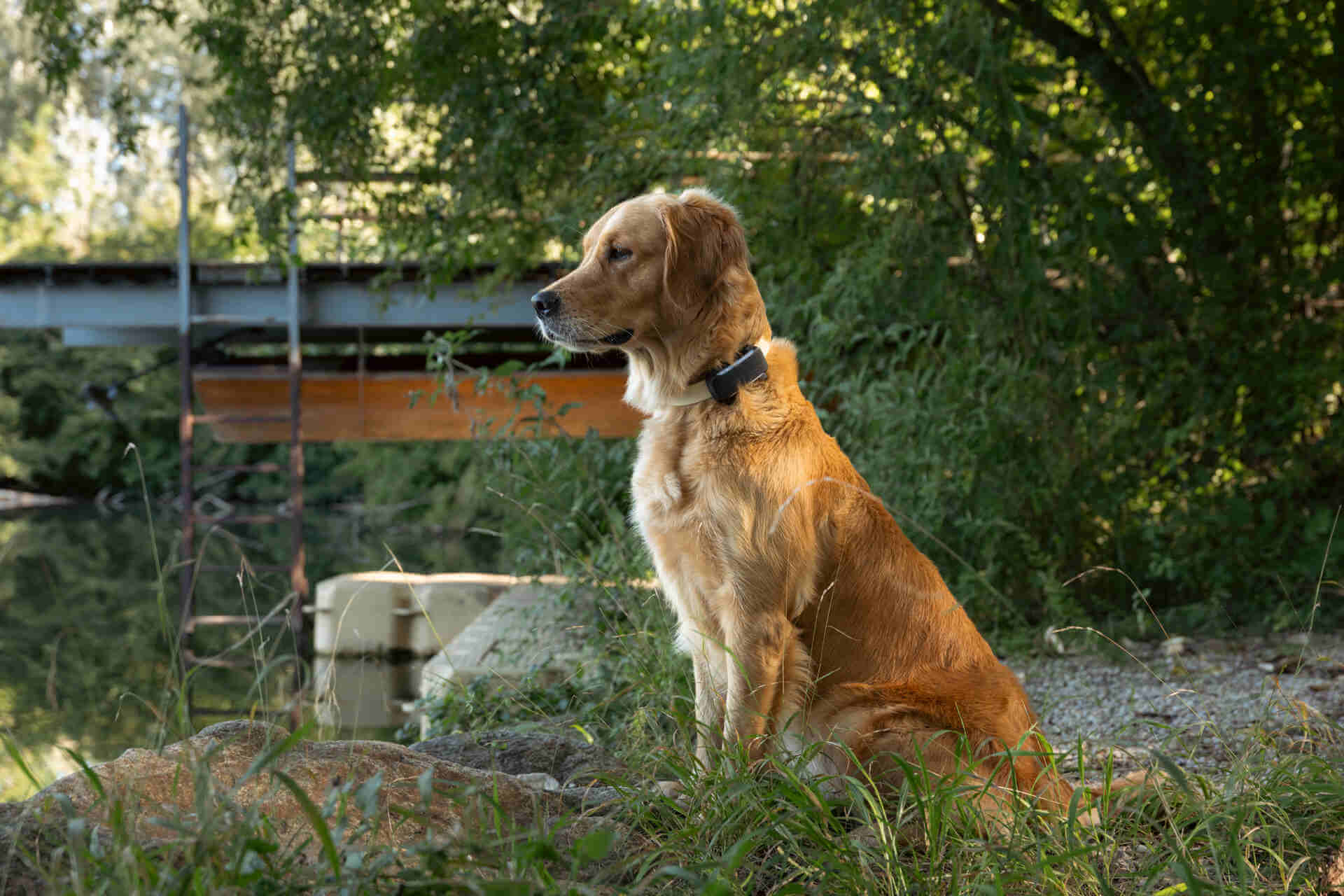
13. Norwegian Elkhound
If your family goes outdoors often, a Norwegian Elkhound may be a great fit for your active lifestyle. Originally bred for herding reindeer, these dogs prefer staying outdoors and getting their rough and tumble time in the snow. Their thick coats help keep them warm in the cold. Norwegian Elkhounds are loyal, loving, and make for excellent family dogs. (And funnily enough, despite their name, they actually originate from Sweden!)
14. Siberian Husky
Friendly and affectionate, Siberian Huskies are good companions for families. Weighing 35-60 pounds, Siberian Huskies are outdoor dogs bred to pull sleds in cold climates. They are energetic and active, and love to run – even out of the back yard if the opportunity arises.
⚠️ Keep your Husky well-exercised to prevent them from running off to burn some extra energy. They were bred for speed over strength – and clock in an easy 30 miles (or 48 km) per hour without a sled. (In case you were planning on chasing yours down.)
15. Samoyed
A working dog bred in Siberia to pull sleds and guard reindeer, Samoyeds are gentle and devoted to their owners, making them a great match for families with children. They have thick fur to protect them from subzero temperatures. They’re known for their playfulness and friendly personality – sometimes so playful, they might even knock you over or drag you along on a walk rather than you walking them!
💡Pictured below is Sally, a cheerful Samoyed who wanders off-leash through the Scottish countryside – with a little help from her Tractive device.

In her mom Clare’s words, “To us, Sally wearing her Tractive GPS means she spends less time leashed and has more time for off the leash play, which means a happier and more thoroughly exercised pup. Plus, all the extra opportunity we have to practice “come back” has led to Sally having more dependable recall. This means she can now be safely allowed off leash in new and unfamiliar places.”
Read more: Off the leash: Safer travelling with Tractive GPS
Enjoy an active lifestyle with your outdoor-loving adventure dog!
Time spent outdoors with your dog is not only fun, it’s good for you and your dog’s mental and physical health. Take advantage of outdoor activities in all types of weather, and bring your adventure dog along for the experience. You’ll create wonderful memories together!
Once you’ve found the best outdoor dog for you, you can also try out these sporty activities together:
And finally – keeping in mind how outdoor dogs like to roughhouse – strap a GPS tracker to your dog’s collar. Ideally, one that’s:
- Bite-proof
- Reinforced with extra tough fiberglass casing
- 100% waterproof
- Equipped with a 30-day battery life
- …and built with love for you and your buddy
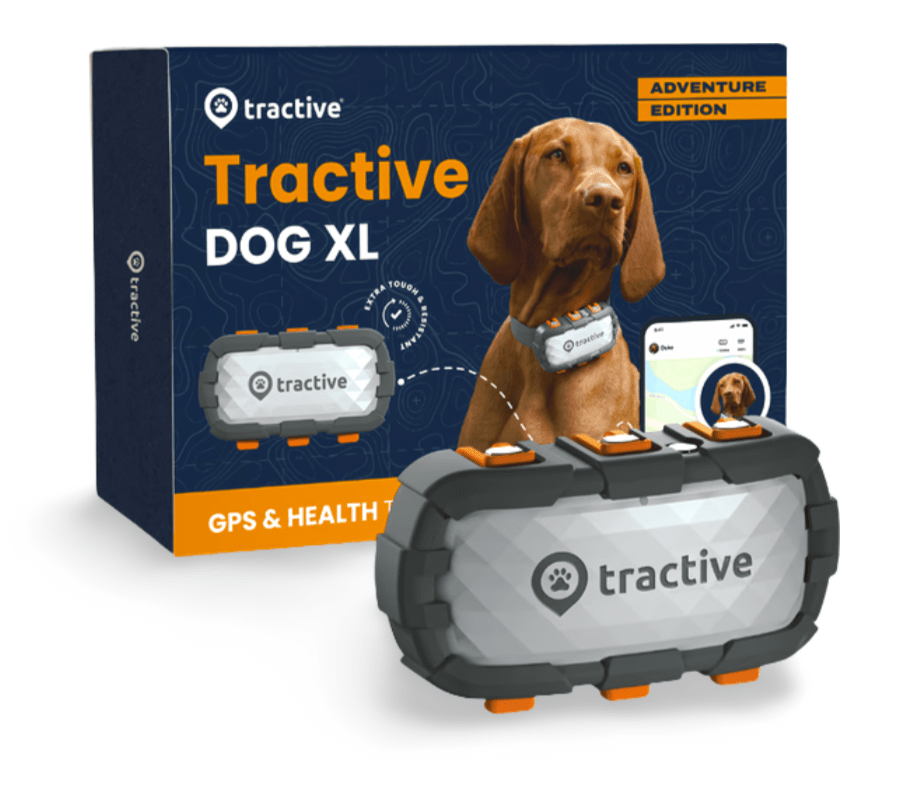
Always know where your dog is
Follow every step in real-time with unlimited range. Get alerts if they wander too far. Keep them happy & healthy with Wellness Monitoring. And let others – like walkers or sitters – keep an eye on your dog too.
And if you’ve enjoyed this post, share it with a friend or a loved one – and let’s help build a safer, kinder world for our furry friends together.



